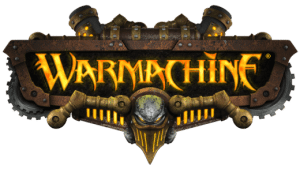For more great tactics articles, check out the Tactics Corner! This is the seventh article in a series of eight that will cover:
- Introduction to Warmachine and Hordes [link to I]
- Faction Descriptions – Warmachine [link to II]
- Faction Descriptions – Hordes [link to III]
- Steamroller and Tournament Scene [link to IV]
- The National Meta [link to V]
- VI. Melee and Range in Warmahordes
- List Design in Two-List Format
- Playing to NOT Lose
List Design in Two-List Format
An important part of competitive Warmachine is the Steamroller format, including both rules scenarios and your list(s). The standard Steamroller requires that a player build two lists and that each list must be played once during the tournament. List building is very important to Warmachine and properly preparing, designing and executing your two lists is essential to a good tournament showing. So, how does one design two lists for an event?
As mentioned in a previous article, Cryx is a very powerful faction and popular at tournaments. Cryx almost always runs one or two lists as infantry skew and presents a challenging matchup problem. For this reason, I usually begin my two list design with one that is able to defeat Cryx. This means one list needs to deal with infantry. Large amounts of shooting, AOE damage and a lack of reliance on heavy armor will give you a good start towards taking down Cryx. Given that you now have a list aimed at infantry, this list will likely also be decent against other infantry heavy factions like Mercenaries and Khador. Once you get a basic understanding of what factions you can play this list against, it’s time to start thinking about a second list, something that can handle the factions that were giving your first list a hard time.
Generally, your second list will need to be able to deal with some amount of armor. High armor skew exists in Warmachine, but is not super common. The armor skew that you generally need to plan for is medium-high armor with a lot of boxes. Specifically, you need to keep an eye on those factions that run 3, 4 and maybe even 5 heavies. A list may have armor 17-19 models, which is not too high, but if they have 4 heavies with 30 boxes each, then you have to deal with 120 boxes of armor and that can be difficult. Skorne is going to be the most difficult here, as they can run five armor 19 heavies in some lists. Circle can also present a problem in this area, though their Warpwolf heavies have lower armor, but are defense 14.
As a summary to the above and a simple place to begin, you may want to consider your two lists on this simple basis; one plays against Warmachine factions and can deal with infantry and the other plays against Hordes factions and can deal with some amount of armor and most specifically boxes with armor. This is a very basic start to two lists and you will quickly find that alterations to your lists will need to be made and that in some instances your Warmachine list will need to fight Hordes and vica-versa.
Next level list design will require you to understand factions down to the caster level. Going back to the Cryx example, there are only a handful of casters that can handle Cryx level infantry, so Cryx players are able to greatly narrow the range of casters that they expect to play against. This will allow the Cryx player to focus their lists towards those casters. This concept will apply to all factions, though the narrowing of caster options will not be as limiting as against Cryx.
Ultimately, list design for a two list format will be about practice, practice, practice and then list tightening to what match-ups you expect. Two lists will not be able to cover every match-up, some will be to your advantage, others not. Of course, you always have the option to dodge that one match-up you don’t want to deal with….

